In the world of garden design, few plants offer the combination of beauty, fragrance, resilience, and functionality quite like lavender. Its aromatic blooms, silvery-green foliage, and neat growth habit make it a favorite among gardeners worldwide. While lavender is popular in borders and herb gardens, planting it along garden paths holds special appeal — enhancing not just the aesthetics of the space but also its sensory, practical, and ecological value.
This article will explore in detail why planting lavender along garden paths is a smart, attractive, and beneficial choice, along with practical advice on varieties, planting techniques, and care.
The Timeless Appeal of Lavender
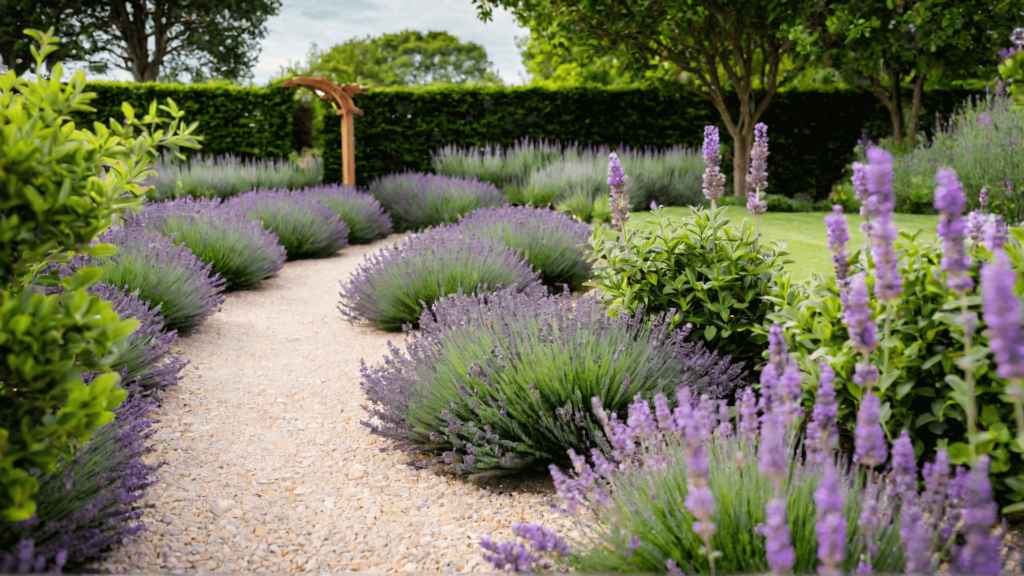
Lavender (Lavandula spp.) is a hardy, drought-tolerant perennial native to the Mediterranean region. Its versatility in gardens comes from:
- Distinctive purple-blue blooms
- Evergreen, aromatic foliage
- Resilience in poor, dry soils
- Ability to attract pollinators while repelling pests
Its soothing scent and ornamental charm have made it a staple in formal gardens, cottage landscapes, and naturalistic planting schemes.
Benefits of Planting Lavender Along Garden Paths
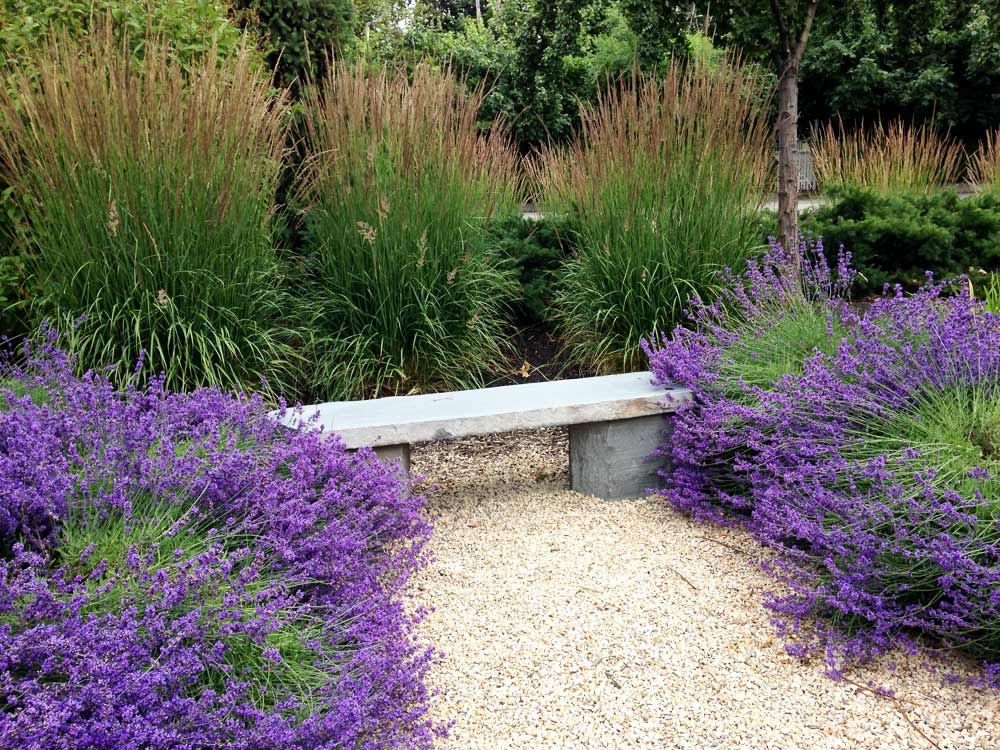
1. Creates a Sensory Experience
One of the most delightful reasons to plant lavender along pathways is its incredible fragrance. Every time you brush past its foliage or flowers, it releases a calming, herbal aroma that enhances the outdoor experience.
Why it matters:
- Stimulates relaxation and reduces stress.
- Adds a multi-sensory dimension to your garden.
- Enhances the atmosphere of patios, courtyards, and front walks.
Gardens are meant to be experienced with all the senses — lavender ensures your path is not just a visual feature, but an olfactory one too.
2. Adds Year-Round Visual Structure
Even when not in bloom, lavender’s silvery-green foliage adds color contrast and visual interest to garden borders and paths. Its dense, mound-forming growth habit provides structure and definition along walkways.
Benefits:
- Creates neat, formal edges in classic gardens.
- Adds texture to contemporary or informal designs.
- Contrasts beautifully with grasses, roses, or bright perennials.
Lavender’s ability to hold its shape and color through winter also makes it valuable for maintaining garden interest year-round.
3. Attracts Beneficial Pollinators
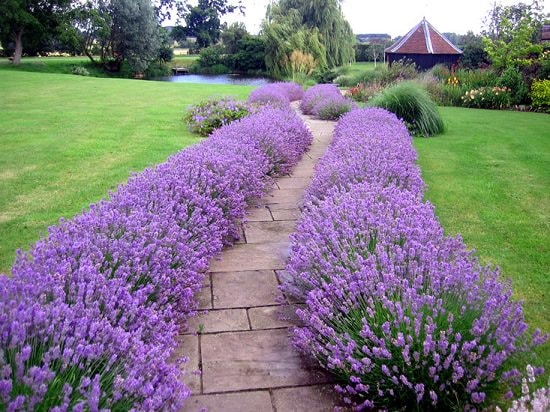
Lavender is renowned for attracting a wide range of pollinators including:
- Bees
- Butterflies
- Hoverflies
Why this matters:
- Encourages healthy pollination of nearby fruits, vegetables, and flowers.
- Supports declining bee populations.
- Promotes ecological balance in the garden.
A path lined with lavender effectively becomes a buzzing pollinator corridor, benefiting the entire garden ecosystem.
4. Repels Garden Pests
Lavender’s strong, aromatic oils naturally deter several unwanted insects such as:
- Mosquitoes
- Moths
- Aphids
- Fleas
By planting it along pathways — where people and pets pass frequently — you help create a protective barrier against common garden pests without resorting to chemical sprays.
5. Low Maintenance and Drought-Tolerant
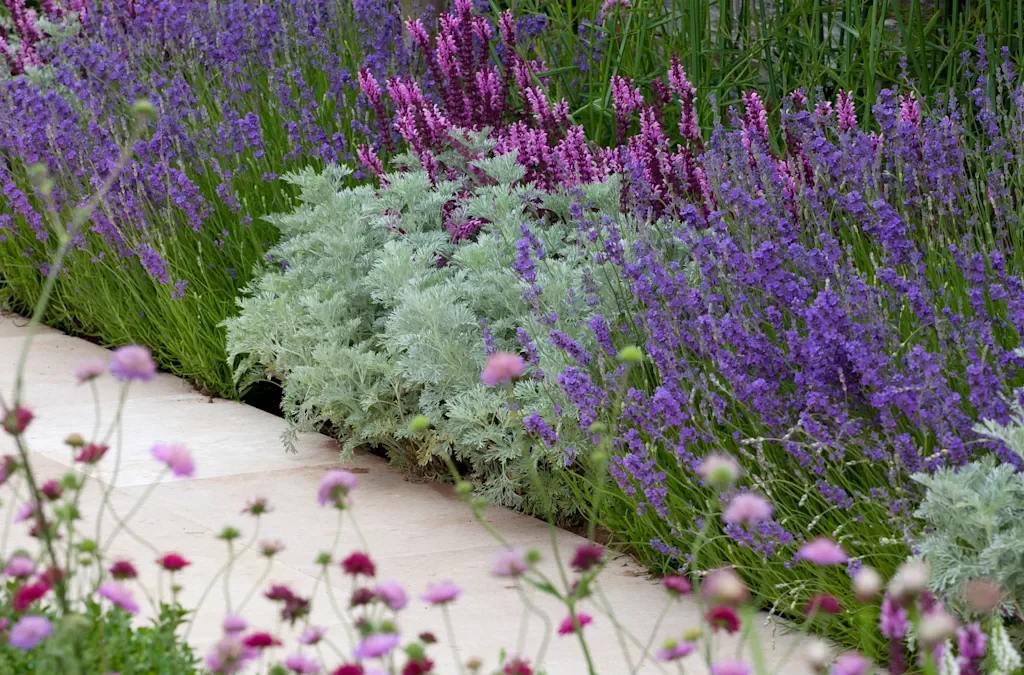
Few plants match lavender’s combination of beauty and resilience. Once established, it thrives in:
- Poor, sandy, or rocky soils
- Full sun exposure
- Dry conditions
Advantages:
- Requires minimal watering after establishment.
- Needs no fertilizers.
- Resistant to most diseases and pests.
Placing such a dependable, low-care plant along paths reduces maintenance needs in high-traffic areas.
6. Prevents Soil Erosion
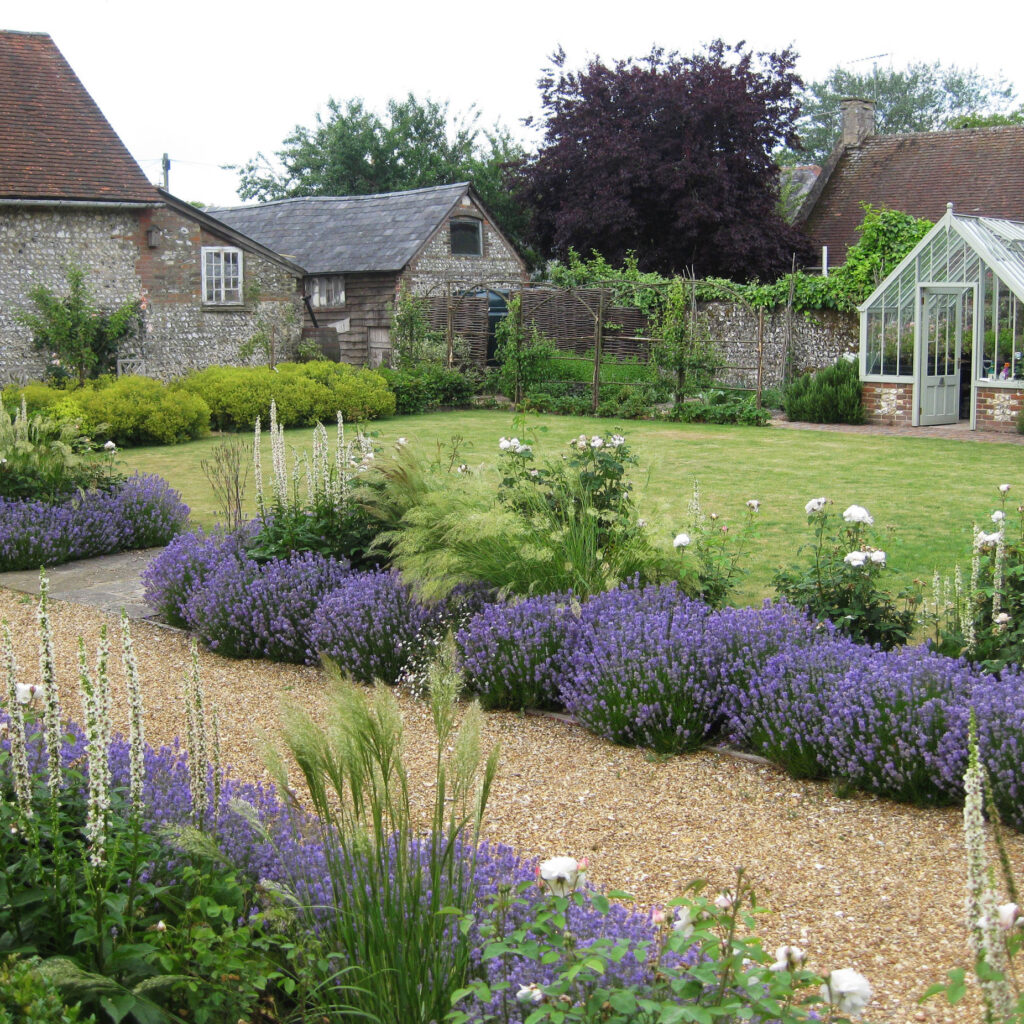
Lavender’s dense root system and compact growth help stabilize soil along slopes or raised path edges, reducing erosion caused by foot traffic and rainfall.
Best for:
- Sloped garden paths.
- Gravel or stone-lined walkways.
- Borders where soil displacement is an issue.
7. Enhances Garden Style and Unity
Lavender complements many popular garden styles, including:
- Mediterranean and xeriscape gardens
- English cottage gardens
- Modern minimalist landscapes
- Formal or symmetrical layouts
Planting it consistently along paths ties different garden sections together, creating a harmonious, cohesive look.
8. Provides Natural Cut Flowers and Culinary Uses
Having lavender conveniently lining a garden path makes it easy to harvest for:
- Dried bouquets
- Lavender sachets
- Homemade soaps or potpourri
- Herbal teas and culinary garnishes
Its proximity to walking areas encourages regular picking and use without disturbing other garden beds.
Best Lavender Varieties for Garden Paths
When selecting lavender for pathway planting, consider varieties based on:
- Height
- Hardiness zone
- Flowering time
- Foliage color
Recommended Types:
- Lavandula angustifolia (English Lavender):
Compact, cold-hardy, intensely fragrant. Ideal for cooler climates. - Lavandula x intermedia (Lavandin):
Larger, highly aromatic, blooms mid to late summer. - Lavandula stoechas (French Lavender):
Distinctive with butterfly-like blooms. Suited for warmer regions. - ‘Hidcote’ and ‘Munstead’ (Compact English Lavender Cultivars):
Perfect for narrow borders and edging paths.
How to Plant Lavender Along Garden Paths
Planting Guidelines:
- Choose a sunny location receiving at least 6–8 hours of direct sunlight daily.
- Space plants 12–18 inches apart for compact varieties, 24–36 inches for larger types.
- Use well-drained, sandy, or gravelly soil.
- Avoid rich, damp, or clay-heavy soils.
- Plant lavender on a slight mound to enhance drainage.
Aftercare:
- Water moderately during the first growing season.
- Prune lightly after flowering to maintain shape and encourage bushiness.
- Replace older, woody plants every 5–6 years for best appearance.
Design Ideas for Lavender-Lined Paths
1. Classic Border:
Line both sides of a straight stone or gravel path with neat rows of lavender for a formal, symmetrical look.
2. Mixed Border:
Pair lavender with rosemary, sage, and thyme for a fragrant Mediterranean herb walk.
3. Gravel Garden Path:
Combine lavender with drought-tolerant plants like sedum and ornamental grasses for a modern, low-water design.
4. Wildflower Path Edging:
Use lavender with bee balm, coneflowers, and yarrow to attract pollinators and soften path edges.
Conclusion
Planting lavender along garden paths is more than an aesthetic choice — it’s a practical, ecological, and sensory investment in your landscape. From its soothing fragrance and pest-repelling properties to its resilience and pollinator support, lavender offers unmatched benefits as a pathway companion.
Whether framing a formal walkway or softening a rustic gravel trail, lavender enhances both the beauty and function of your outdoor space. Its timeless charm and low-maintenance nature make it a smart addition to gardens large and small.
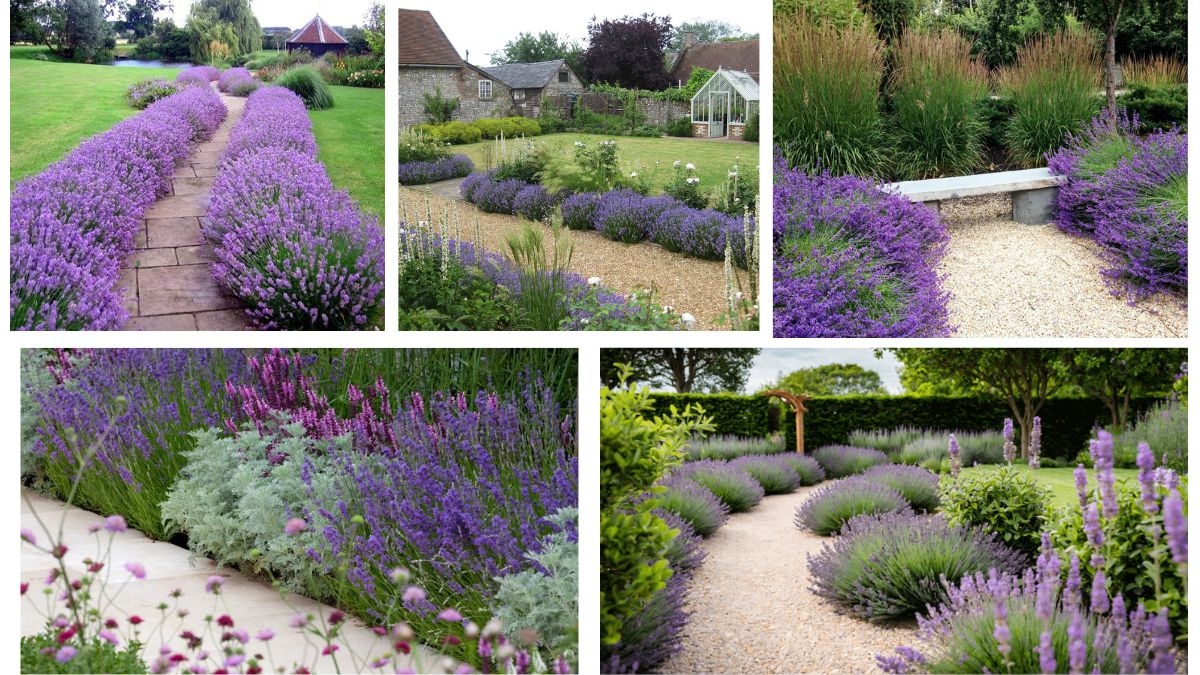



Leave A Comment